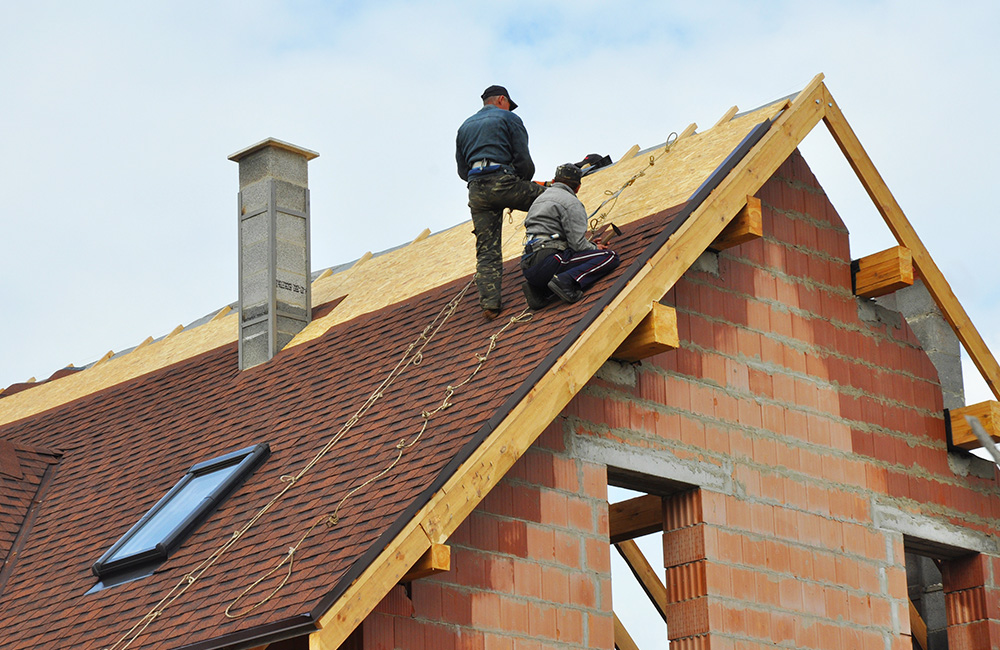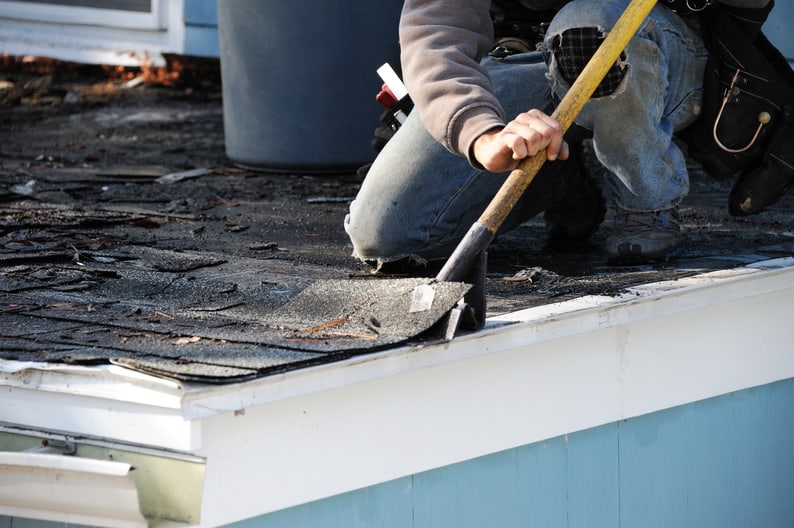Roofing Oahu: Top Quality Providers for Long Lasting Roofs in Oahu
Roofing Oahu: Top Quality Providers for Long Lasting Roofs in Oahu
Blog Article
Understanding the Various Kinds Of Roof Coverings: A Comprehensive Overview for Homeowners
With a selection of options-- ranging from the traditional gable to the modern flat-- each kind provides distinct advantages and difficulties that should align with the house owner's certain needs and environmental factors to consider. As we explore the ins and outs of different roof kinds, it becomes apparent that one dimension does not fit all; the right selection may surprise you.
Gable Roofing Systems
Saddleback roofs, defined by their triangular form, are amongst the most prominent roof styles because of their simpleness and effectiveness in shedding water and snow. This layout includes two sloping sides that fulfill at a ridge, enabling effective drainage and decreasing the risk of water accumulation. The steep pitch commonly connected with gable roofings improves their ability to manage hefty rainfall, making them suitable for various environments.
In addition to their functional advantages, saddleback roofs provide visual adaptability. They can be adjusted to numerous architectural styles, from typical to contemporary homes. The design can likewise fit additional functions such as dormer home windows, which improve all-natural light and ventilation in the attic area.
Furthermore, gable roofing systems provide ample area for insulation, adding to power efficiency. Homeowners can choose from a selection of roofing products, consisting of asphalt tiles, metal, and floor tiles, further enhancing personalization choices.
In spite of their advantages, gable roofs may require additional assistance in areas susceptible to high winds or heavy snowfall. In general, the saddleback roof remains a preferred choice because of its blend of functionality, durability, and aesthetic appeal.
Flat Roofs
Level roofings are frequently identified for their minimalist layout and useful applications, particularly in industrial and business settings (oahu roofing). These roofing systems include a almost straight or straight surface area, which permits for simple building and versatile space usage. While they may do not have the aesthetic charm of angled roofs, flat roofings offer various benefits, especially in metropolitan atmospheres where optimizing area is essential
One of the key benefits of level roofing systems is their access. Home owners can use the roof area for various purposes, such as roof gardens, terraces, or photovoltaic panel installments. Furthermore, flat roofings are usually more cost-efficient to set up and maintain contrasted to their sloped equivalents, as they require less products and labor.
Common materials used for level roofings consist of built-up roofing (BUR), modified bitumen, and single-ply membranes, each offering distinct benefits. Generally, level roofings offer as a versatile and useful choice for several property owners and businesses alike.
Hip Roofs
Hip roofs are defined by their sloped sides that merge on top, forming a ridge. This design stands out from gable roofings, as all 4 sides of a hip roofing system slope downwards toward the walls, supplying a more stable framework. The angle of the inclines can vary, permitting adaptability in architectural aesthetics and functionality.
One of the primary benefits of hip roofs is their ability to hold up against heavy winds and adverse weather problems. The sloped surfaces allow you can look here much better water drain, lowering the danger of leakages and water damages. In addition, hip roofs offer enhanced attic room space, which can be used for storage space and even exchanged livable locations.
Nevertheless, constructing a hip roofing system can be a lot more complex and expensive than simpler roofing system types, such as saddleback roofs. The extra product and labor associated with developing the inclines and making certain appropriate structural stability can cause greater costs. Despite these downsides, several house owners favor hip roof coverings for their resilience, aesthetic allure, and capacity for energy effectiveness.
Mansard Roofings
Mansard roof coverings, commonly recognized by their one-of-a-kind four-sided layout, feature 2 inclines on each side, with the reduced incline being steeper than the upper. This building style, stemming from France in the 17th century, is not just aesthetically enticing but useful, as it makes the most of the functional space in the upper floorings of a building. The steep lower incline allows for more clearance, making it an excellent selection for attics or lofts, which can be converted into living rooms.
Mansard roofs are from this source characterized by their flexibility, suiting numerous architectural styles, from traditional to contemporary. They can be built with various products, including asphalt tiles, slate, or metal, providing homeowners with a variety of choices to fit their budget plans and choices. Furthermore, the layout permits the assimilation of dormer windows, enhancing all-natural light and air flow in the upper levels.
Nonetheless, it is vital to consider the possible disadvantages. Mansard roofs may call for even more upkeep because of the intricacy of their style, and their high slopes can be challenging for snow and rain drainage. Overall, mansard roofing systems combine sophistication with usefulness, making them a preferred selection among property owners seeking unique architectural features.
Lost Roofings
As home owners progressively seek simpleness and performance in their architectural layouts, dropped roofing systems have actually emerged as a preferred option. Characterized by a solitary sloping aircraft, a shed roofing system presents a minimal visual that matches numerous home designs, from contemporary to rustic.
One of the main benefits of a shed roofing system is its uncomplicated construction, which typically converts to reduce labor and material prices. This layout enables efficient water drainage, decreasing the danger of leaks and water damage. Furthermore, the upright slope gives ample room for skylights, improving all-natural light within the inside.
Lost roof coverings also supply adaptability in regards to usage. They can be properly incorporated right into additions, garages, or outside structures like structures and sheds. Moreover, this roof style can suit different roofing products, consisting of steel, asphalt shingles, or even green roofings, straightening with eco-friendly efforts.
However, it is important to consider local climate problems, as heavy snow loads might necessitate adjustments to the roofing's angle or structure. On the whole, dropped roofings offer a practical and aesthetically pleasing choice for home owners aiming to maximize capability without compromising design.
Conclusion


Gable roofs, identified by their triangular shape, are among the most prominent roof covering designs due to their simpleness and efficiency in dropping water and snow. oahu roofing. The steep pitch commonly associated with gable roofings improves their ability to take care of heavy precipitation, making them appropriate for different climates
While they might lack the aesthetic allure of pitched roofing systems, level roofs offer numerous advantages, specifically in urban environments where making the most of room is essential.

Report this page